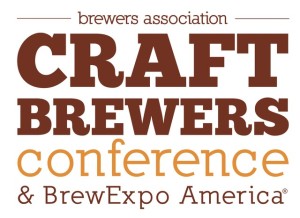 In a press conference at the 2014 Craft Brewers Conference, taking place this week in Denver, leaders from the Brewers Association provided an update on the state of craft beer and the issues facing the industry in 2014.
In a press conference at the 2014 Craft Brewers Conference, taking place this week in Denver, leaders from the Brewers Association provided an update on the state of craft beer and the issues facing the industry in 2014.
Brewery Growth & Impact
In 2013, 15.6 million barrels of craft beer were produced – an 18% increase from 2012. The overall beer market produced 196 barrels, giving craft beer a 7.8% market share. Craft claimed 14.3% of the retail beer market – $14.3 billion in a $100 billion industry – a 20% increase from the year prior. The overall economic impact of craft beer is enormous when the full spectrum of brewery to wholesaler to retailer is counted: 33.9 billion in 2012. Just in Ohio, the economic impact was credited at $1,261,063,000. The 2013 numbers will be released later this year.
There were 2,768 operating craft breweries in 2013, with microbreweries surpassing brewpubs in number for the first time. There are another 1,898 are in planning as of March. These numbers count brewing facilities, not brewing companies, accounting for breweries with more than one location.
Issues Facing Breweries
Federal Excise Tax
Also known as the Small BREW Act, this legislation seeks to reduce the small brewer rate on the first 60,000 barrels by 50 percent (from $7.00 to $3.50/barrel) and institute a new rate $16.00 per barrel on beer production above 60,000 barrels up to 2 million barrels. The Brewers Association promotes this as a job creation bill. HR 494 in the House currently has 156 house co-sponsors, and the Senate companion bill, S917, currently has 40 senate co-sponsors.
Food Safety Modernization Act
As part of the Food Safety Modernization Act, the FDA has proposed regulations governing use of spent grain for animal feed, which many breweries donate or sell to farmers for little cost. The proposed FDA rules on animal feed could lead to significantly increased costs and disruption in the handling of spent grain
Export Development
Getting craft beer to other continents requires a lot of logistics to maintain the integrity and freshness of beer. The Brewers Association is currently working to export American craft beer, with Canada, Sweden, the United Kingdom, Australia and Japan as the top five export markets. To be part of this program, an additional membership fee with the Brewers Association is required – 82 breweries are currently participating. In another example of how international American craft beer is becoming, 14% of attendees at this year’s Craft Brewers Conference are international.
Beer Trends and Definitions
Increase of adjunct use in craft beer. Former definition mandated a breweries flagship beer be 100% malt but that has changes to reflect brewer creativity, and allowing established breweries like America’s oldest brewery, Yuengling, to be considered part of the craft beer community.
Quality Concerns
Paul Gatza, Director of the Brewers Association, described a common scenario in emerging breweries: a homebrewer whose friends tell him or her that they are making craft beer decided to start a brewery, with little technical expertise and on a shoestring budget. The beer they produce is oxidized or suffers from other beer defects, which risks consumers who try it getting a negative perception of craft beer as whole. Gatza advises these small startups to send their beer out for scientific testing.
State and Retail Representation
Wyoming recently launched a state brewers guild, giving all of the 50 states their own brewers guild. Additionally, retailers are now able the join the Brewers Association, joining wholesalers and brewers and giving all three branches of the three tier system representation in the trade organization.












